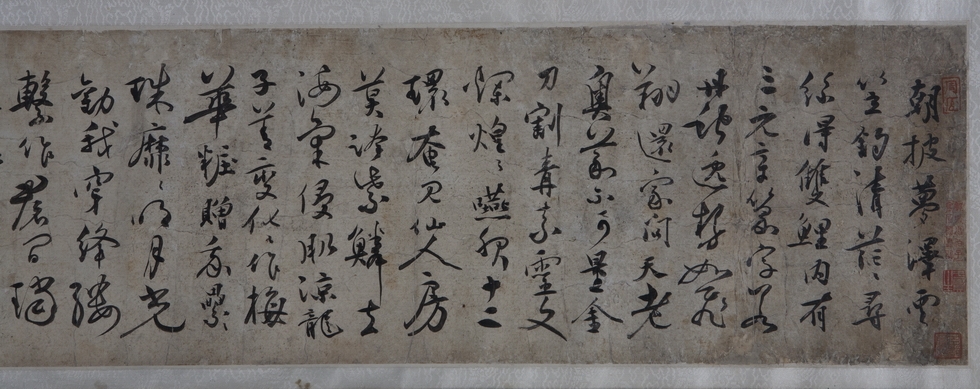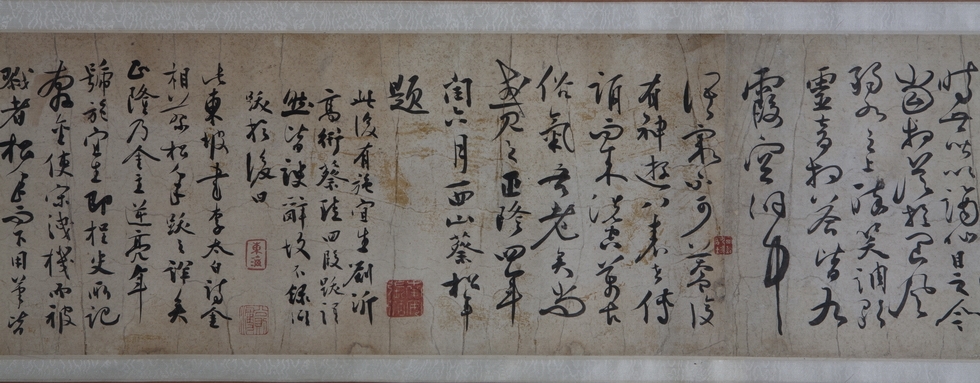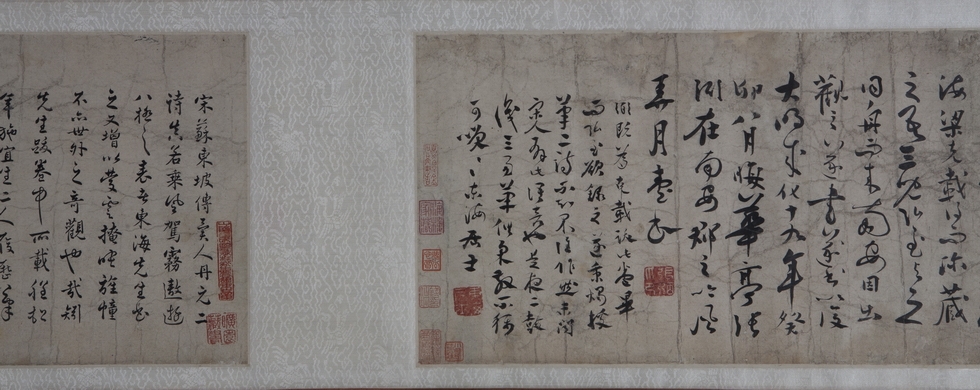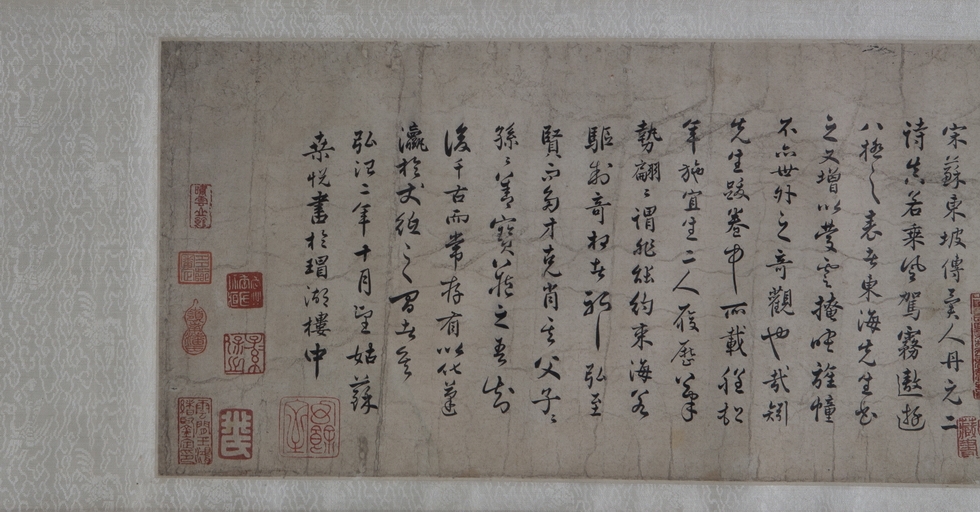明 张弼 草书苏轼太白仙诗卷
明成化十九年(1483)
纸本
纵 24.6厘米 横355厘米
本卷内容分为三段,首段为临苏轼李白诗两首,第二段为录金相蔡松年跋,第三段为张弼自书题跋。纵观此卷,笔墨饱满,势态飞动而流畅,笔画的提按起收均富有变化,形成了跌宕的独特书风。此卷是其存世作品中难得一见的佳作。
张弼(1425—1487),字汝弼,晚号东海翁,松江华亭人。其狂草雄畅劲健,从张旭、怀素狂草中脱胎而出。流传书迹甚少。
Verse of Su Shi and Li Bai, cursive script
Zhang Bi(1425-1487)
Ming dynasty, 19th year of the Chenghua period(1483)
Hand scroll, ink on paper
Height 24.6cm, Width 355cm
There are three sections to his hand scroll: the first is a copy of two pieces of verse, one by Li Bai and one by Su Shi; the second is a flawless copy of a colophon by Cai Songnian; and the third is Zhang Bi’s own colophon.across the piece as a whole the brush and ink work is full bodied, seeming to fly and flow over the scroll. There is a rich variation in the application, pressure, raising and removal of each brush stroke, forming an uninhibited and unique calligraphic style. This hand scroll is a fine and rare example of Zhang’s surviving works.
Zhang Bi had the style name Ru Bi,and later took the personal name Old Gentleman of the Eastern Sea. He was a native of Huating in Songjiang(modern day Shanghai). His wild cursive script is majestic and vigorous, born of the styles of Zhang Xu and Huai Su’s wild cursive script. Very few of Zhang Bi’s works survive today.








 电话:022-83883000
电话:022-83883000 传真:022-83883088
传真:022-83883088 地址:天津市河西区平江道62号
地址:天津市河西区平江道62号